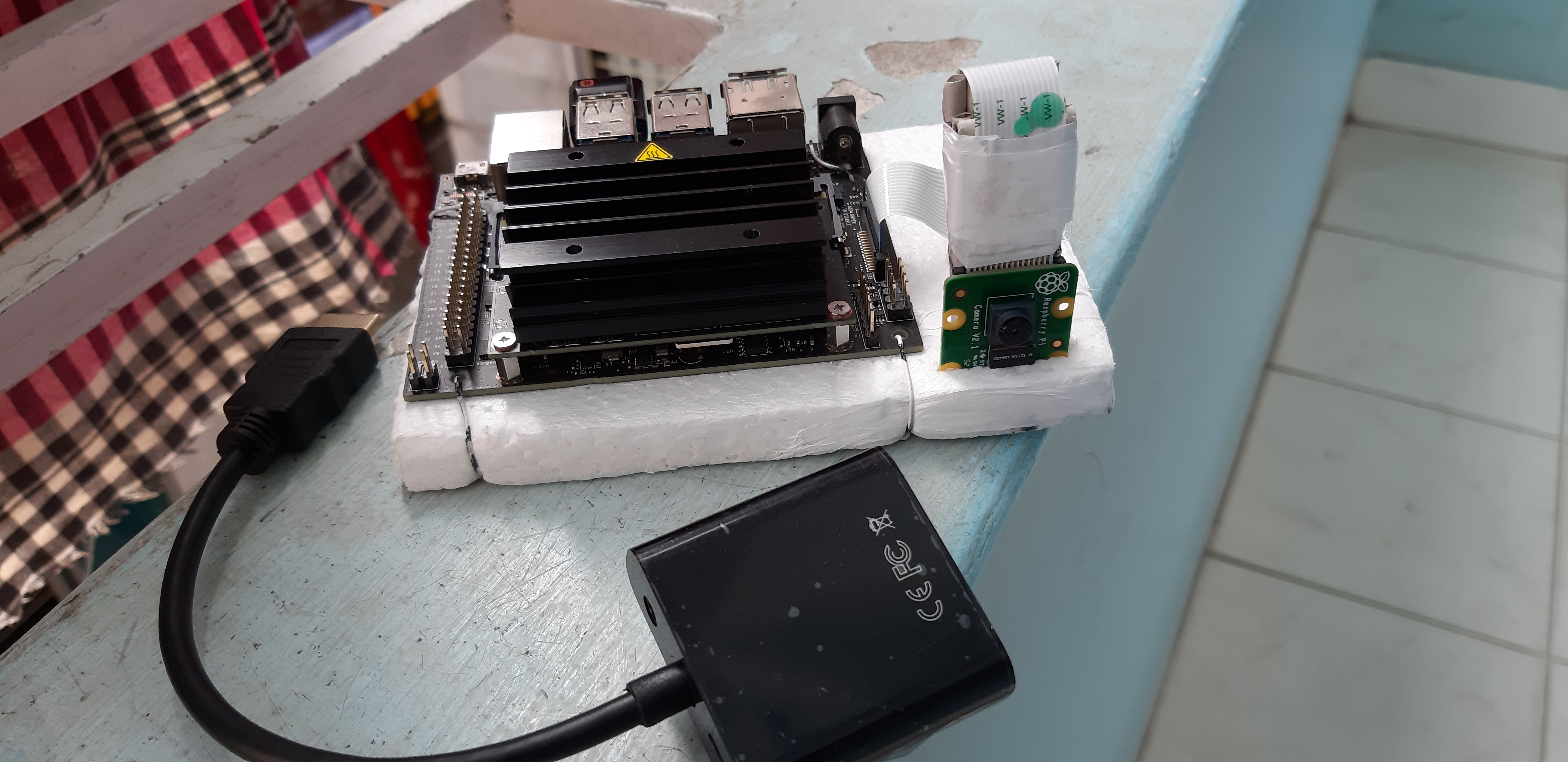This tutorial taken from this repository https://github.com/JetsonHacksNano/CSI-Camera and original article on JetsonHacks.
DemoCSI-Camera Interface with Jetson NanoSimple tutorial of using a MIPI-CSI (Ver. 2.0) Camera (like the Raspberry Pi Version 2 camera) with the NVIDIA Jetson Nano Developer Kit.
The camera should be installed in the MIPI-CSI Camera Connector on the carrier board. The pins on the camera ribbon should face the Jetson Nano module.
To test the camera: link needed
$ gst-launch-1.0 nvarguscamerasrc ! 'video/x-raw(memory:NVMM),width=3820, height=2464, framerate=21/1, format=NV12' ! nvvidconv flip-method=0 ! 'video/x-raw,width=960, height=616' ! nvvidconv ! nvegltransform ! nveglglessink -eThere are three examples:
simple_camera.py is a Python script which reads from the camera and displays to a window on the screen using OpenCV:
$ python simple_camera.pyface_detect.py is a python script which reads from the camera and uses Haar Cascades to detect faces and eyes:
$ python face_detect.pyHaar Cascades is a machine learning based approach where a cascade function is trained from a lot of positive and negative images. The function is then used to detect objects in other images.
See: https://docs.opencv.org/3.3.1/d7/d8b/tutorial_py_face_detection.html
The third example is a simple C++ program which reads from the camera and displays to a window on the screen using OpenCV:
$ g++ -std=c++11 -Wall -I/usr/lib/opencv simple_camera.cpp -L/usr/lib -lopencv_core -lopencv_highgui -lopencv_videoio -o simple_camera
$ ./simple_cameraStarting with JetPack 4.3/L4T 32.3.1 the Jetson runs OpenCV 4. This means that if you are using an earlier version of JetPack, you will need to select an earlier release of this CSI-Camera repository. In order to do that for example, before running the samples:
$ git clone https://github.com/JetsonHacksNano/CSI-Camera.git
$ git checkout v2.0You can use v4l2-ctl to determine the camera capabilities. v4l2-ctl is in the v4l-utils:
$ sudo apt-get install v4l-utilsFor the Raspberry Pi V2 camera the output is (assuming the camera is /dev/video0):
$ v4l2-ctl --list-formats-ext
ioctl: VIDIOC_ENUM_FMT
Index : 0
Type : Video Capture
Pixel Format: 'RG10'
Name : 10-bit Bayer RGRG/GBGB
Size: Discrete 3280x2464
Interval: Discrete 0.048s (21.000 fps)
Size: Discrete 3280x1848
Interval: Discrete 0.036s (28.000 fps)
Size: Discrete 1920x1080
Interval: Discrete 0.033s (30.000 fps)
Size: Discrete 1280x720
Interval: Discrete 0.017s (60.000 fps)
Size: Discrete 1280x720
Interval: Discrete 0.017s (60.000 fps)For the GStreamer pipeline, the nvvidconv flip-method parameter can rotate/flip the image. This is useful when the mounting of the camera is of a different orientation than the default.
flip-method : video flip methods
flags: readable, writable, controllable
Enum "GstNvVideoFlipMethod" Default: 0, "none"
(0): none - Identity (no rotation)
(1): counterclockwise - Rotate counter-clockwise 90 degrees
(2): rotate-180 - Rotate 180 degrees
(3): clockwise - Rotate clockwise 90 degrees
(4): horizontal-flip - Flip horizontally
(5): upper-right-diagonal - Flip across upper right/lower left diagonal
(6): vertical-flip - Flip vertically
(7): upper-left-diagonal - Flip across upper left/lowStarting with L4T 32.2.1 / JetPack 4.2.2, GStreamer support is built in to OpenCV. Please note that if you are using earlier versions of OpenCV (most likely installed from the Ubuntu repository), you will get 'Unable to open camera' errors. If you can open the camera in GStreamer from the command line, and have issues opening the camera in Python, check the OpenCV version.
>>>cv2.__version__









Comments
Please log in or sign up to comment.